Baldwin Family: Codfish Town and Beyond
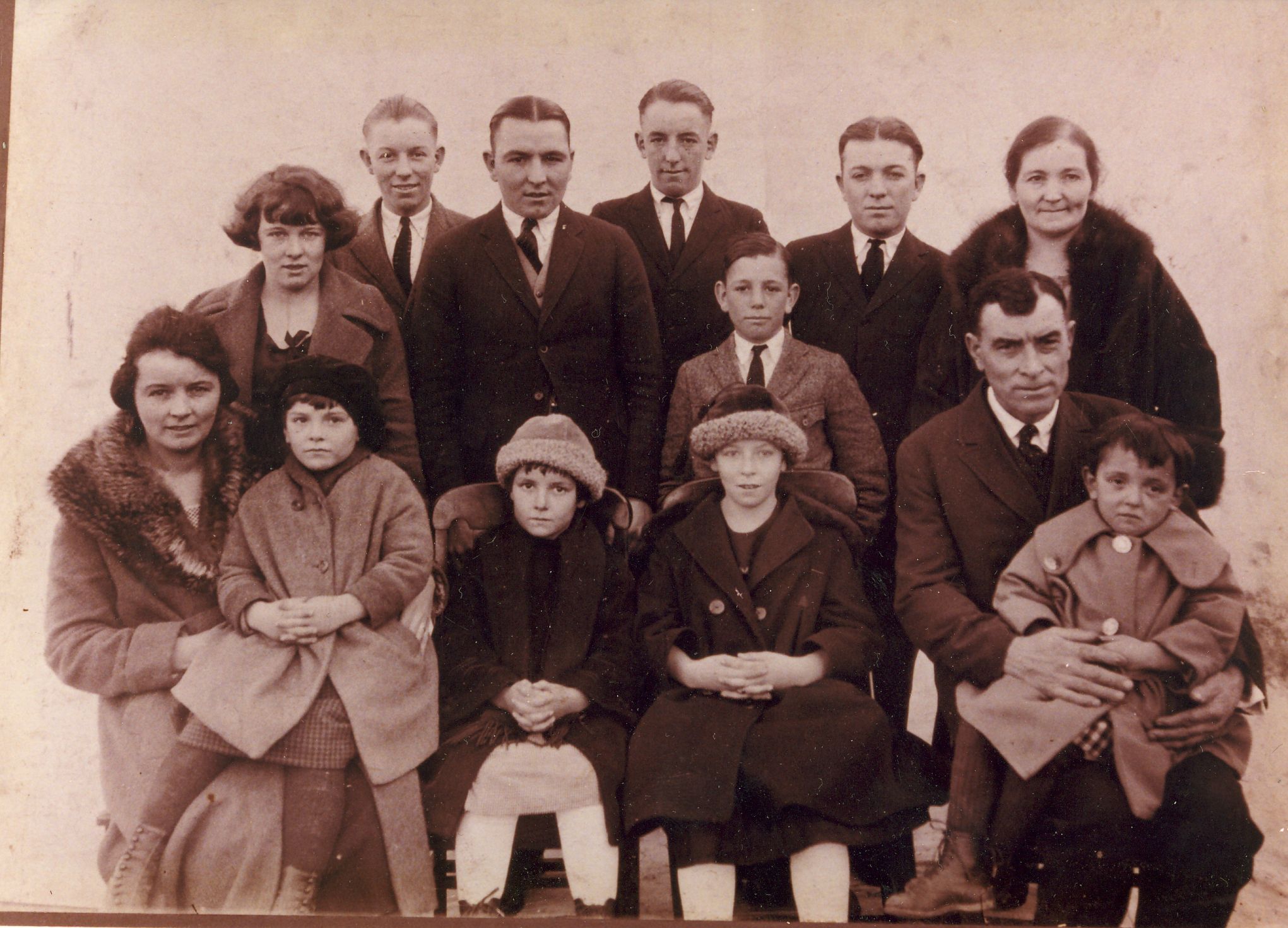
In 1891, Patrick and Mary Baldwin left their home in Newfoundland, near St. John’s, and made their way here. They were among a wave of immigrants to Lake Forest from Newfoundland in the 1880s and 1890s – skilled workers who found a niche in what was becoming a fast-growing community.

Many of them built homes in the southeast part of town, near Washington Road, Washington Circle, and Ryan Place. With so many residents from Newfoundland, the neighborhood quickly became known as Codfish Town, since on Friday evenings, the scent of codfish cooking wafted through the air.

With only one doctor at the time ministering to a growing population, Mary Baldwin’s skills taking care of the sick came in handy in Codfish Town. She assisted Dr. Haven on his house calls and delivered many neighborhood babies.
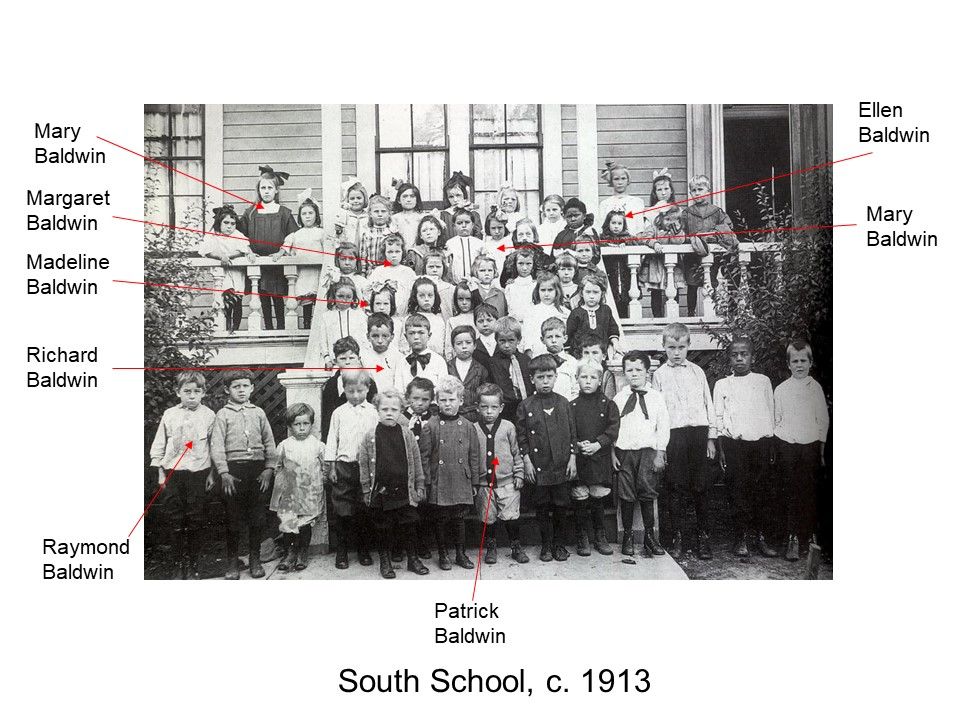
With seven children, you can imagine that soon Mary Baldwin had a bevy of grandchildren in town to care for as well. These Baldwin grandchildren made the short jaunt to South School at Sheridan and Maplewood. This 1913 picture includes at least 8 young Baldwins.
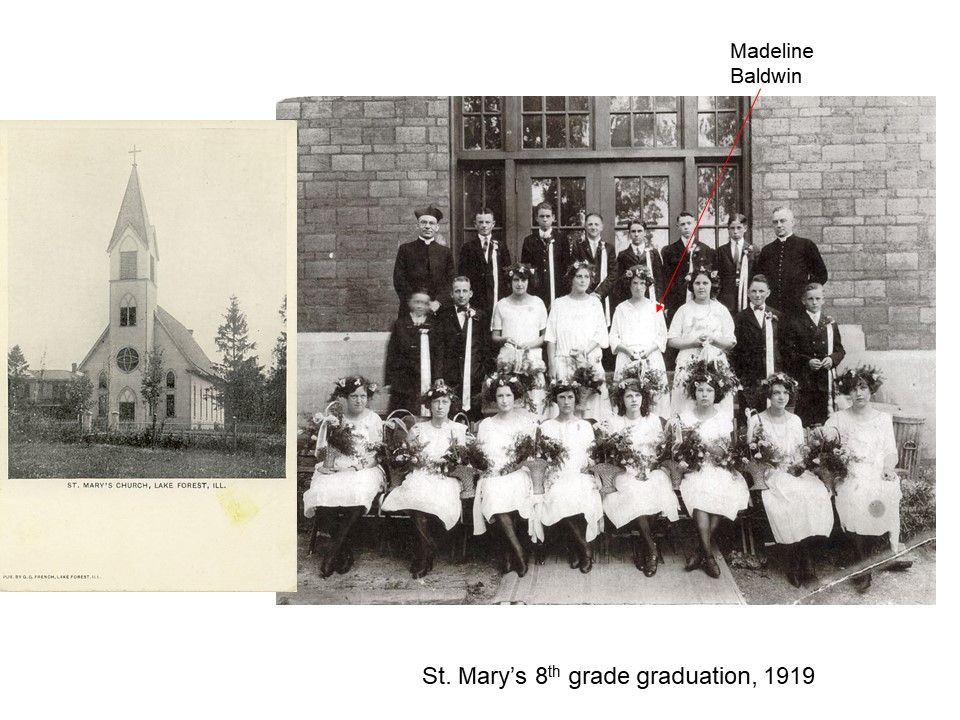
Once they grew a bit older, the Baldwin cousins would meet up and make the trek to St. Mary’s School. Generations of Baldwins have graduated from the eighth grade here, and have been baptized, confirmed and married at St. Mary’s parish.
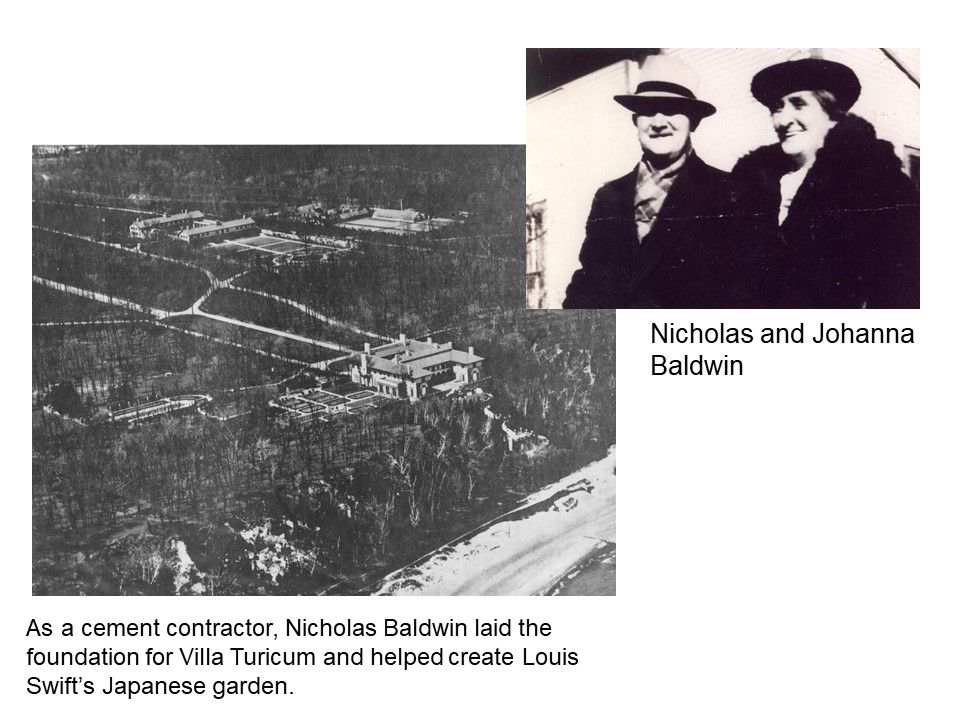
Many of the Baldwin descendents still in Lake Forest and Lake Bluff today can trace themselves back to either Nicholas or Edward Baldwin, Patrick’s two oldest sons. Nicholas Baldwin married Johanna Nugent, also from Newfoundland, in the late 1890s. He worked as a cement contractor, laying the foundation for estates along the North Shore such as Edith Rockefeller McCormick’s Villa Turicum. He also helped translate plans for Louis Swift’s Japanese garden into reality.

Nicholas Baldwin’s home on Cherry Avenue stood just around the corner from half a dozen other family members. Many of the third and fourth generation of Baldwins in Lake Forest remember Sunday gatherings here, singing around Johanna Baldwin’s piano.
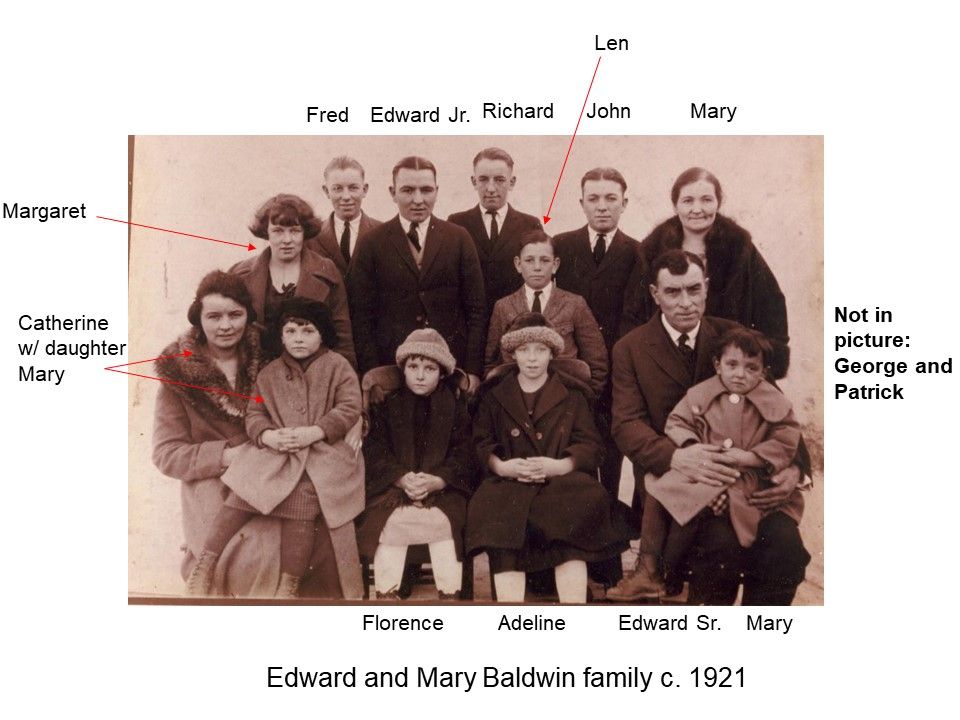
Nicholas Baldwin’s younger brother Edward married Mary Lawler, another Newfoundland immigrant. He worked as a plasterer, a trade that many of his descendents followed. Edward’s sons George and Edward Jr. founded Baldwin Brothers, which in 1923 became George Baldwin Plastering, a business that continues to serve the community today.
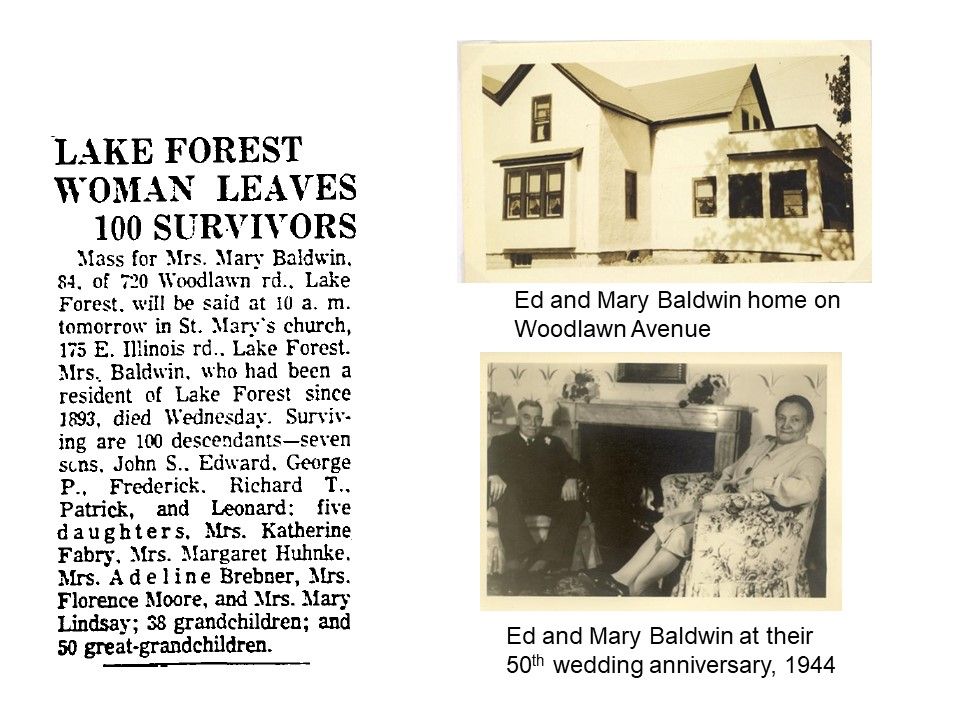
Ed and Mary Baldwin built this home on Woodlawn when they were married in 1894, and lived there all 67 years of their marriage. When Mary died in 1962, just a few months after her husband, the Chicago Tribune printed this story almost in disbelief – she had left 100 descendants.
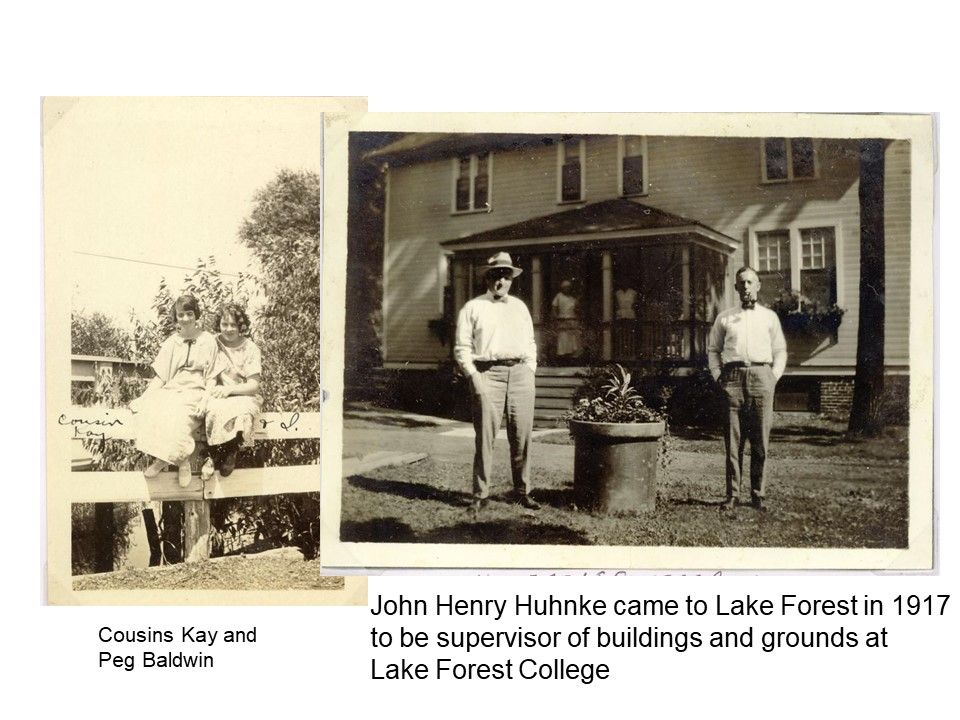
While the children of Nicholas and Ed Baldwin were growing up together in Lake Forest – cousins Kay and Peg Baldwin were particular friends – the Huhnkes were just arriving. John Henry Huhnke moved his family here in 1917 when he was named the new supervisor of buildings and grounds at Lake Forest College.

His son Jack married Peg Baldwin, Nicholas Baldwin’s second oldest daughter, and by 1934 they had three children: Mary Anita, John Frederick Jr., called Fred, and Thomas Edward.
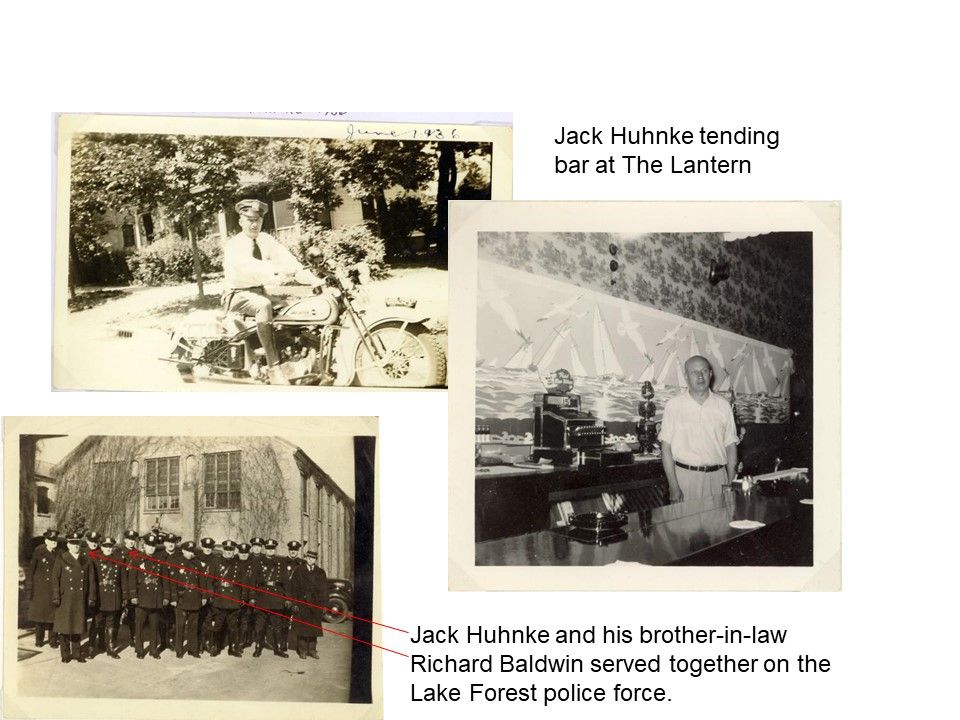
Jack Huhnke spent 12 years as a Lake Forest policeman, serving alongside his wife Peg’s older brother Richard Baldwin. As a former officer of the law, he was certainly later able to command the respect of the patrons of The Lantern, which he owned for 22 years.

Jack’s son Fred Huhnke followed in his father’s footsteps of service to the community at an early age. In 1944, during World War II, Fred collected more scrap metal than any other student at Gorton School, earning instant fame in the guise of the cover page of the Lake Forester.
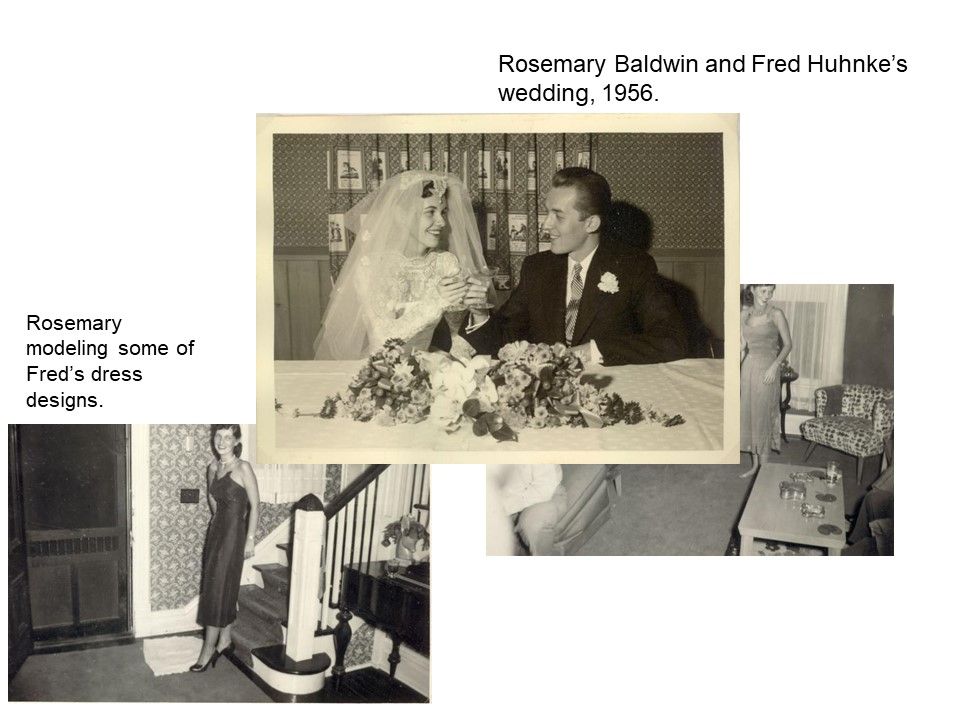
After serving overseas in Korea, Fred Huhnke graduated from the School of the Art Institute and went on to a career in dress design at The Couture Shop in Lake Forest and Hart Marx in Chicago. Here you can see Fred’s fiancée Rosemary Baldwin modeling a few of his creations. Like Fred, Rosemary is also a descendent of the original Baldwin immigrants who came to Lake Forest in 1891. Rosemary worked for 35 years bookkeeping at the Old Elm Club.

Rosemary’s father, Donald Baldwin, was the oldest son of Nicholas Baldwin. He worked as a gardener at several of the estates in town, which is probably how he met his wife, Fanny McGinley, an Irish immigrant sponsored by the Knight Cowles family who was nanny to their two daughters. After they were married, Don and Fanny Baldwin initially lived in a home on the Kent Clow estate, where Don was a chauffeur.
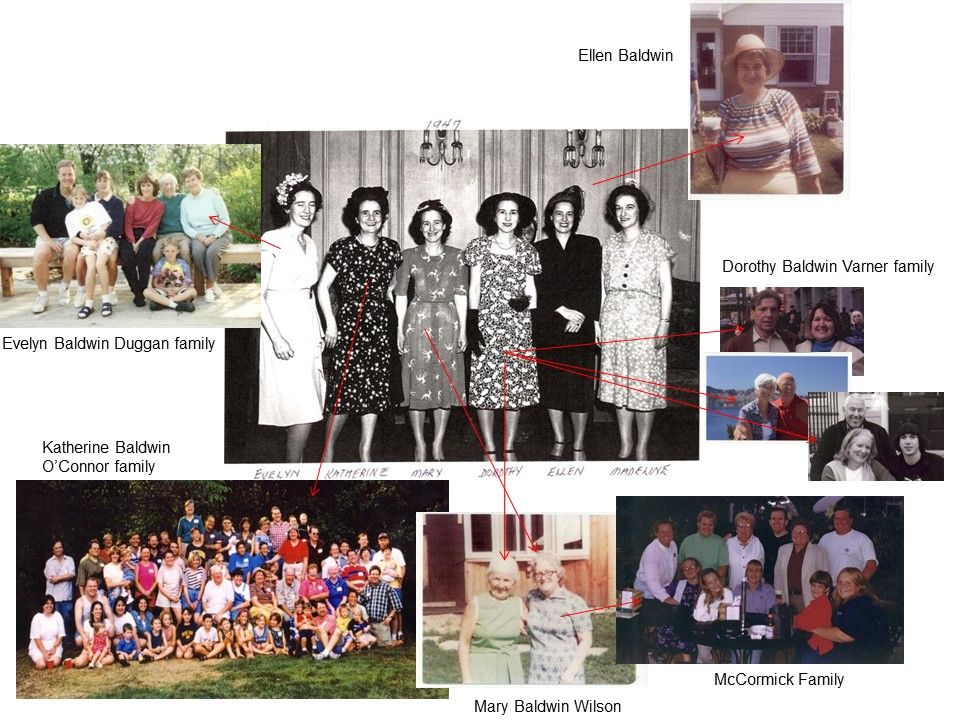
It would take all afternoon to give a complete history of all the many generations of Baldwins – even despite the fact that by the third generation in Lake Forest none of them were having 13 children anymore. As you can see from the photographs, Katherine Baldwin O’Connor has perhaps the most impression connection, although she still needs a few more to equal her aunt Mary at 100. The last of these siblings was Evelyn, who volunteered for years at Lake Forest Hospital and St. Mary’s after retiring from Abbot.
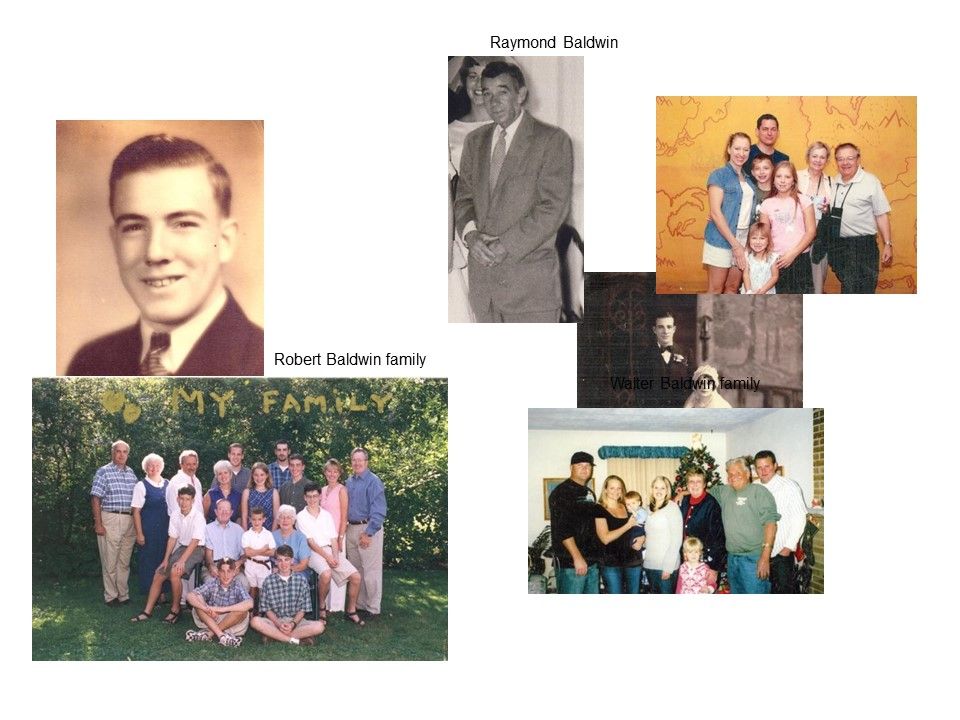
Several members of the family have fond memories of “Uncle Bob” Baldwin, whose beautiful Irish tenor voice was often in demand, from Sunday gatherings on Cherry Avenue to Mass at St. Mary’s and even entertaining soldiers at the Pacific front in World War II.

As an entire neighborhood grew up around the Baldwin family, they’ve helped to build Lake Forest into what it is today, providing the foundations and walls of our community.